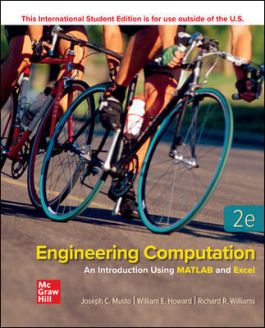Engineering Computation ISE
2nd Edición
1260579808
·
9781260579802
© 2021 | Published: January 28, 2020
This text provides a detailed introduction to the computational techniques, numerical methods, and computational tools used by engineering students. It is aimed at first or second year students, and is intended to provide the theoretical and computat…
Leer Más
Gracias este es un libro electrónico o EBOOK, para poder utilizarlo debes de crear una cuenta en VitalSource Bookshelf esta es una Aplicación Gratis. Una vez que has creado tu cuenta, dentro de la plataforma debes de redimir los distintos códigos que hayas adquirido para poder leer tus libros.
Para pagos en BBVA, transferencias interbancarias o tiendas de autoservicio, NO REDONDEAR el monto.
- Ingresa a tu libro desde cualquier lugar o dispositivo, con acceso a internet o sin acceso.
- Crear notas, y apuntes en tus lecturas.
- Puedes realizar búsquedas a los conceptos que necesites de manera rápida y fácil.
PART 1
Chapter 1: Computing Tools
Chapter 2: Excel Fundamentals
Chapter 3: MATLAB Fundamentals
Chapter 4: MATLAB Programming
Chapter 5: Plotting Data
PART 2
Chapter 6: Finding the Roots of Equations
Chapter 7: Matrix Mathematics
Chapter 8: Solving Simultaneous Equations
Chapter 9: Numerical Integration
Chapter 10: Optimization
This text provides a detailed introduction to the computational techniques, numerical methods, and computational tools used by engineering students. It is aimed at first or second year students, and is intended to provide the theoretical and computational foundation required for advanced study in engineering. The text provides a foundation in computational theory, and an overview of thenumerical methods used by engineering students and practicing engineers. The text focuses on implementation of these computational techniques using two widely-used software packages: MATLAB, which provides a structured programming environment, and Excel, which is a ubiquitous spreadsheet application. Throughout the text, these two softwares are used to demonstrate the computational techniques developed in the text, and their advantages and limitations are described.

